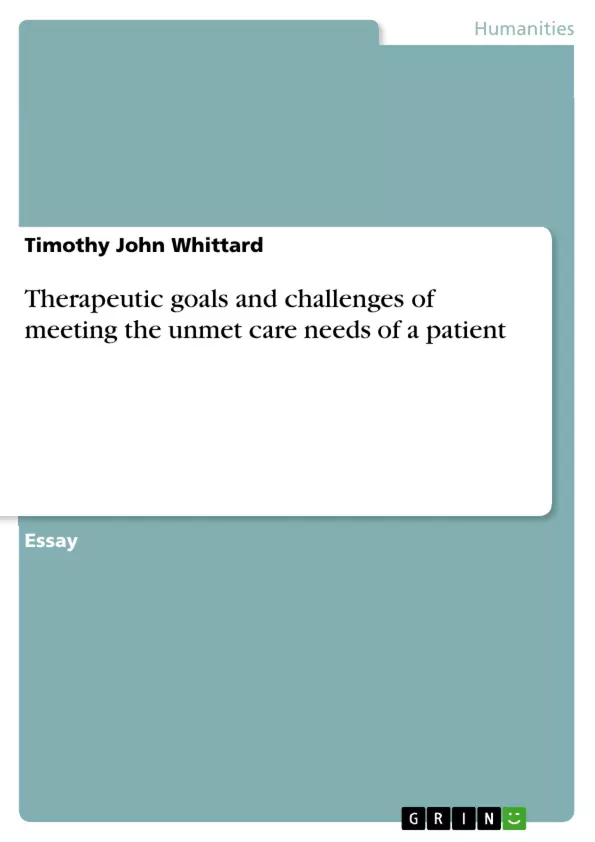This essay aims to identify, explore and discuss the therapeutic goals of working with a patient I encountered during past clinical practice, and the challenges associated in meeting the goals and needs of the patient; this is achieved through reflection and the consideration of the behaviour of the patient, the responses of the nursing team, and a plethora of other factors inherent within the healthcare service itself.
Inhaltsverzeichnis (Table of Contents)
- NT3 – The Management of Therapeutic Challenges
- The Patient - Jemaine
- Challenges in the Therapeutic Relationship
- Therapeutic Goals
- Challenges Encountered in Meeting Therapeutic Goals
- Conclusion
Zielsetzung und Themenschwerpunkte (Objectives and Key Themes)
This assignment examines the therapeutic goals of working with a patient diagnosed with a mental health condition, exploring the challenges encountered in achieving those goals. The paper reflects on the patient's behavior, the responses of the nursing team, and various factors within the healthcare service. It aims to analyze interpersonal communication and identify effective and ineffective interactions and interventions.
- The importance of the therapeutic relationship in mental health nursing.
- Challenges associated with establishing and maintaining therapeutic relationships with patients experiencing mental health difficulties.
- The role of trust and communication in building a successful therapeutic relationship.
- The impact of patient factors, such as lack of insight, on therapeutic interventions.
- The significance of collaborative approaches in patient care and the potential for empowering patients through their active participation.
Zusammenfassung der Kapitel (Chapter Summaries)
- The introduction emphasizes the critical role of the therapeutic relationship in mental health nursing, highlighting the need to understand the challenges involved in developing and maintaining these relationships.
- The second chapter introduces Jemaine, a young man with a history of mental health challenges, focusing on his initial admission to the inpatient ward and the factors contributing to his relapse.
- The third chapter details the challenges encountered in establishing a therapeutic relationship with Jemaine, specifically the impact of his persecutory delusions, paranoid beliefs, and lack of insight into his illness.
- The fourth chapter outlines the therapeutic goals for Jemaine, which included ensuring his safety, challenging his delusional beliefs, facilitating a grieving process for his grandfather, and reducing his psychotic symptoms.
- The fifth chapter examines the difficulties faced in achieving the therapeutic goals, particularly Jemaine's lack of insight, poor engagement with treatment, and resistance to collaborative care approaches.
Schlüsselwörter (Keywords)
Key concepts explored in this paper include therapeutic relationship, mental health nursing, challenges, patient factors, trust, communication, collaboration, empowerment, insight, delusional beliefs, and patient care.
- Arbeit zitieren
- Timothy John Whittard (Autor:in), 2008, Therapeutic goals and challenges of meeting the unmet care needs of a patient, München, GRIN Verlag, https://www.grin.com/document/470793



